Shokz OpenSwim Pro is the latest release from one of the biggest names in headphones, and we've had the chance to test them for several weeks. Shokz has a respectable following comprising runners, cyclists, and outdoor enthusiasts who enjoy the bone-conduction headphone listening experience, whether for safety, comfort, or convenience. Swimmers, too, have been catered for over some years with the Shokz OpenSwim, waterproof headphones with internal storage. The OpenSwim Pro builds on this base, improving battery life and adding Bluetooth connectivity.
Our Digital Editor, William Austin-Lobley, has experience with open-ear tech, starting with hisreview of the OpenMove in 2021. He took on the Shokz OpenSwim Pro and adopted them into his ongoing training for a half marathon, using the headphones during training runs and rest days spent in the pool.
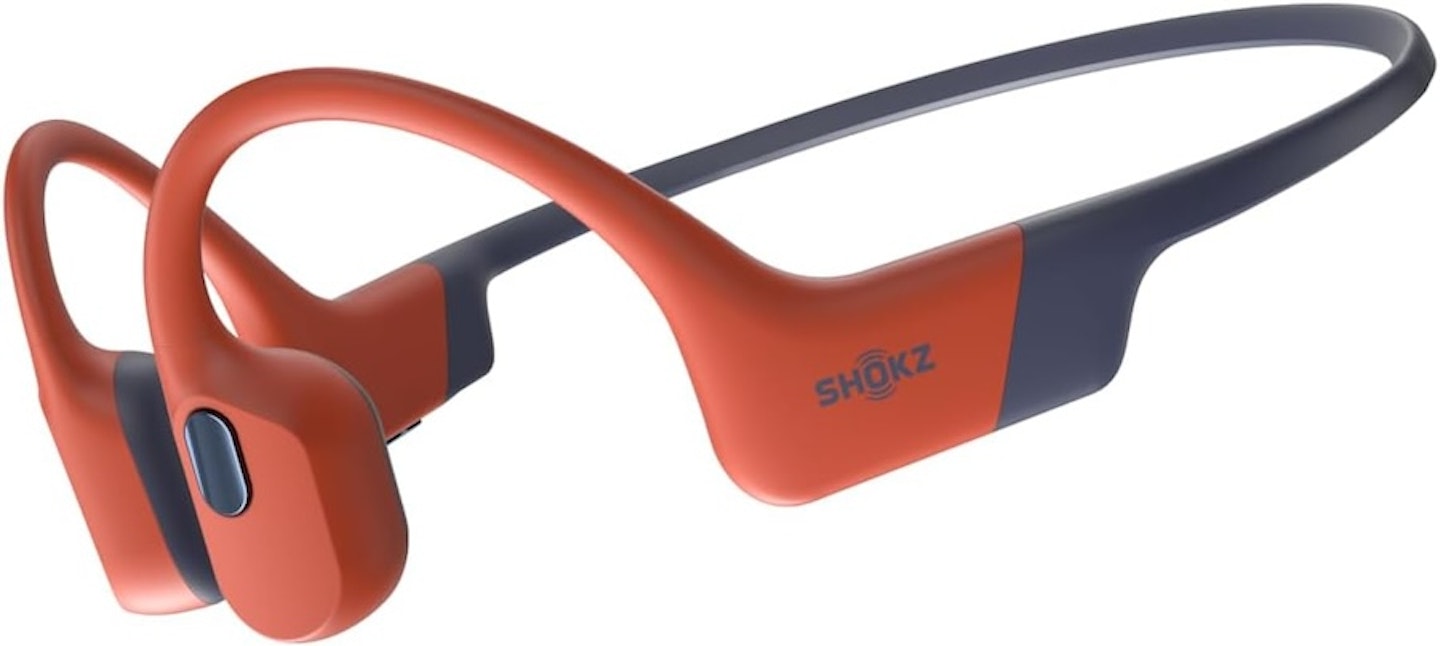
Pros
- Quality audio performance
- Nine hours in Bluetooth mode with faster 1.5-hour quick charging
- Vastly improved MP3 storage, only 27g and fully waterproof
Cons
- Only six hours in MP3 mode, compared to eight hours in the original model
- No music organising in smartphone app
| Battery life | Bluetooth mode: 9 Hours<br>MP3 mode: 6 Hours |
| Charge time | 90 minutes, 10-minute charge gives 3 hours of battery life (music) |
| IP rating | IP68 |
| Weight | 27.3g |
| Storage | 32GB |
What's the difference between the Shokz OpenSwim and the OpenSwim Pro?
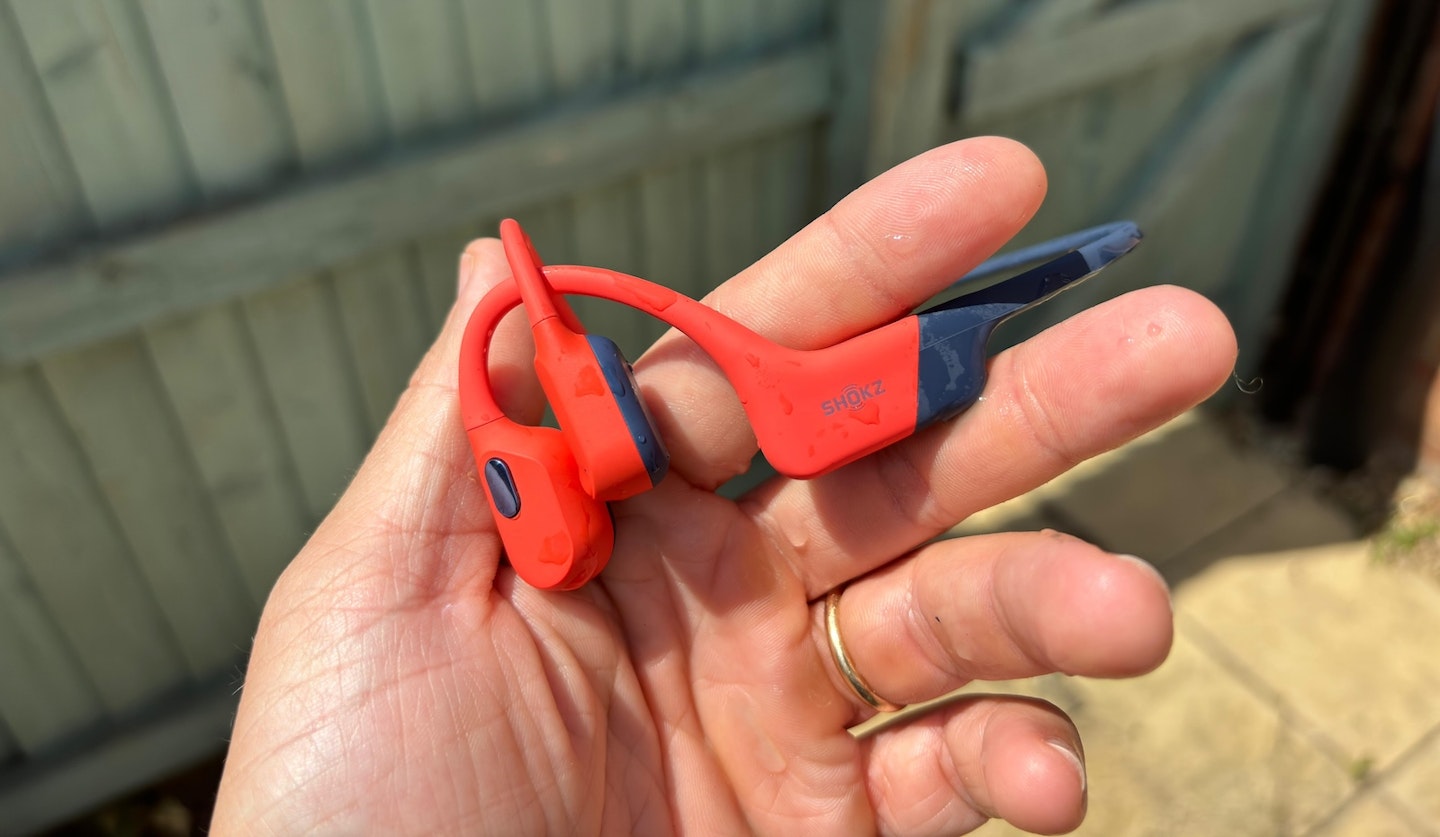
The Shokz OpenSwim, formerly known as Xtrainerz, launched in 2019 and is the only fully waterproof Shokz bone-conduction headphones. It features 4GB of storage for up to 1,200 songs, meaning that the user is free from the burden of a smartphone for audio, eight hours of battery life, and a weight of 30g.
The OpenSwim Pro, launched in 2024, builds on these foundations with a few extras. Most notably, the headphones have Bluetooth and a boosted 32GB of memory (8,000 songs), allowing users to switch between MP3 playback and streamed audio from a connected device. It also has an improved battery life of nine hours, features quick charging – improving the speed from two to one and a half hours – and a reduced weight of 27g.
The sound technology – Shokz's seventh-generation tech – is the same on both models.
However, these improvements come with compromises. The nine-hour battery life is only available in Bluetooth mode, with the MP3 mode offering only six hours of playback. Similarly, the OpenSwim has a stand-by mode of ten days, whereas the Pro features an auto-off function that activates after two hours of idle time in MP3 mode and six hours in Bluetooth mode.
Superficial differences are present, too. The OpenSwim is available in black and navy, and the OpenSwim Pro is available in grey or red (which I tested).
Here's a table that lays out the specifications.
| Feature | Shokz OpenSwim | Shokz OpenSwim Pro |
|---|---|---|
| Connectivity | MP3 playback only (internal storage) | Bluetooth & MP3 playback (internal storage) |
| Storage | 4GB | 32GB |
| Battery life | Up to 8 hours | Up to 9 hours |
| Charge time | 2 hours | 1.5 hours |
| Price | £139 | £169 |
Which should you choose?
If you spend all your time exercising in the water, have plenty of MP3 files to add to the storage and never need Bluetooth connectivity, you can save yourself £30 by opting for the originals. However, the OpenSwim Pro offers a huge 32GB of storage - so if you are someone who thinks they will get bored of 1,200 songs, the extra cash might be worth it.
If you mix your sporting disciplines and regularly have a smartphone or fitness tracker to hand, then the extra cost of the Bluetooth-carrying Pro model makes sense. It's all down to your situation and needs.
Review: Using the OpenSwim Pro
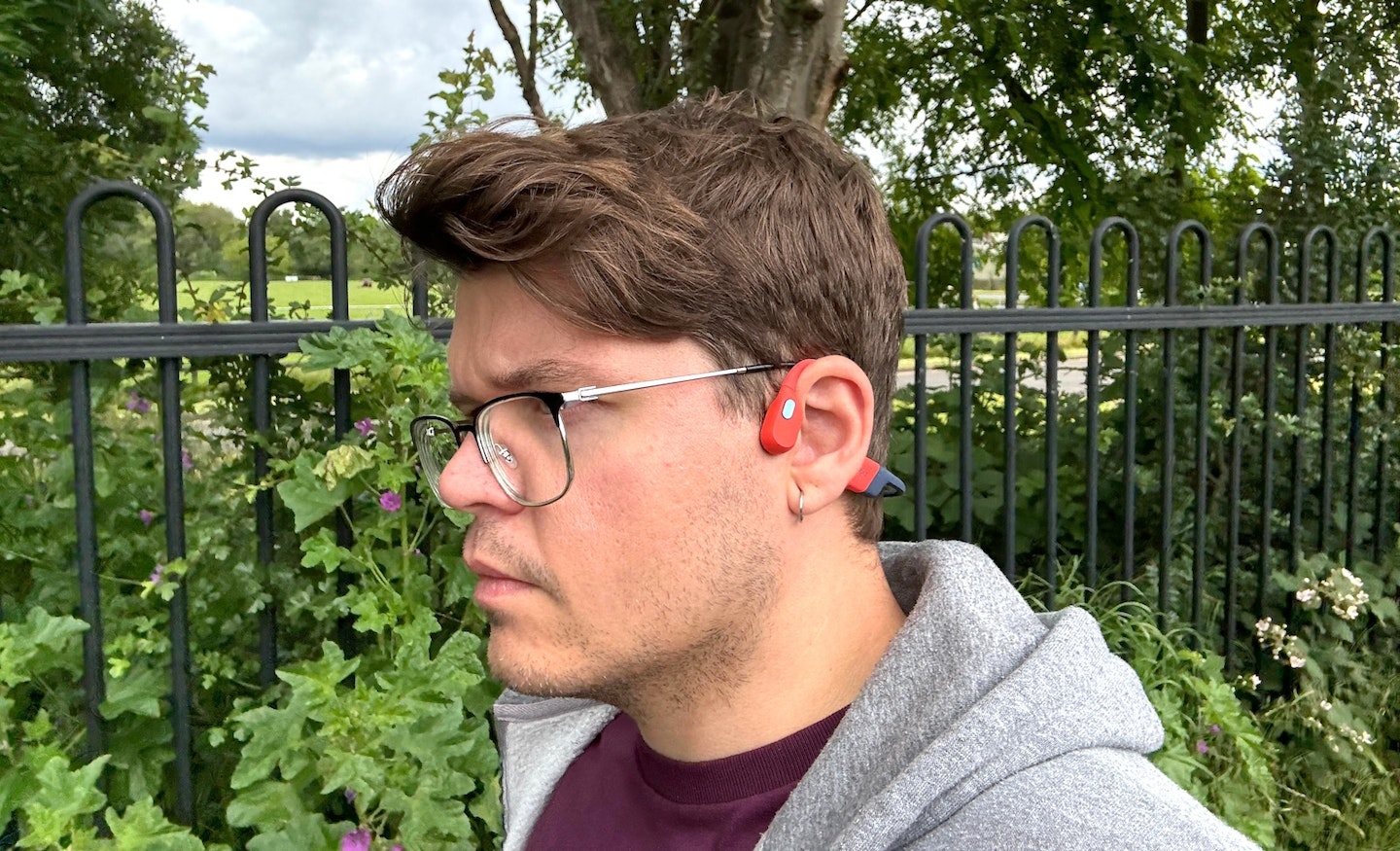
The sound of the OpenSwim Pro is best summed up by a friend's reaction when I gave them to him to try: "Cor, that's good! Bassier than I thought." Carrying the seventh-generation tech from Shokz, the bone-conduction tech pushes out a rich sound with a good representation across highs, mids and lows. Yes, those lows are less than those with headphones, but these are not thin-sounding. It makes for a fun time listening to music across genres – I enjoyed listening to thrash metal legends Testament as much as I did electronic phenomenon Fred Again.
Podcasts and audiobooks are similar, though performance on these can be improved using the EQ mode (found in the Shokz app), which boosts the vocal ranges and helps cut through in busier environments.
There are only two EQ modes to choose from - Standard or Vocal - a step down from the options Shokz offers on its OpenFit Air, which I recently tested, boasting four.
Once you get your head underwater, expect the sound to be much fuller because of the nose isolation water provides. Shokz provides earplugs with the OpenSwim Pro, which prevents water from entering the ears. Because of the ear-drum-bypassing nature of bone-conduction tech, audio is still audible.
They are more comfortable than the OpenMove (2021 model) I have used for years. The over-ear pressure is nicely measured, and the weight feels negligible. They aren't quite as comfortable as the OpenFit Air, but it's close. I wore them with glasses for upwards of four hours at a time and never had any complaints.
You need to charge the OpenSwim Pro via the magnetic proprietary connection, which offers speeds comparable to USB-C. While a USB-C connection would offer improved accessibility – after all, who doesn't have a draw full of these already – I reached out to Shokz, and it confirmed that this solution offers increased waterproofing performance.
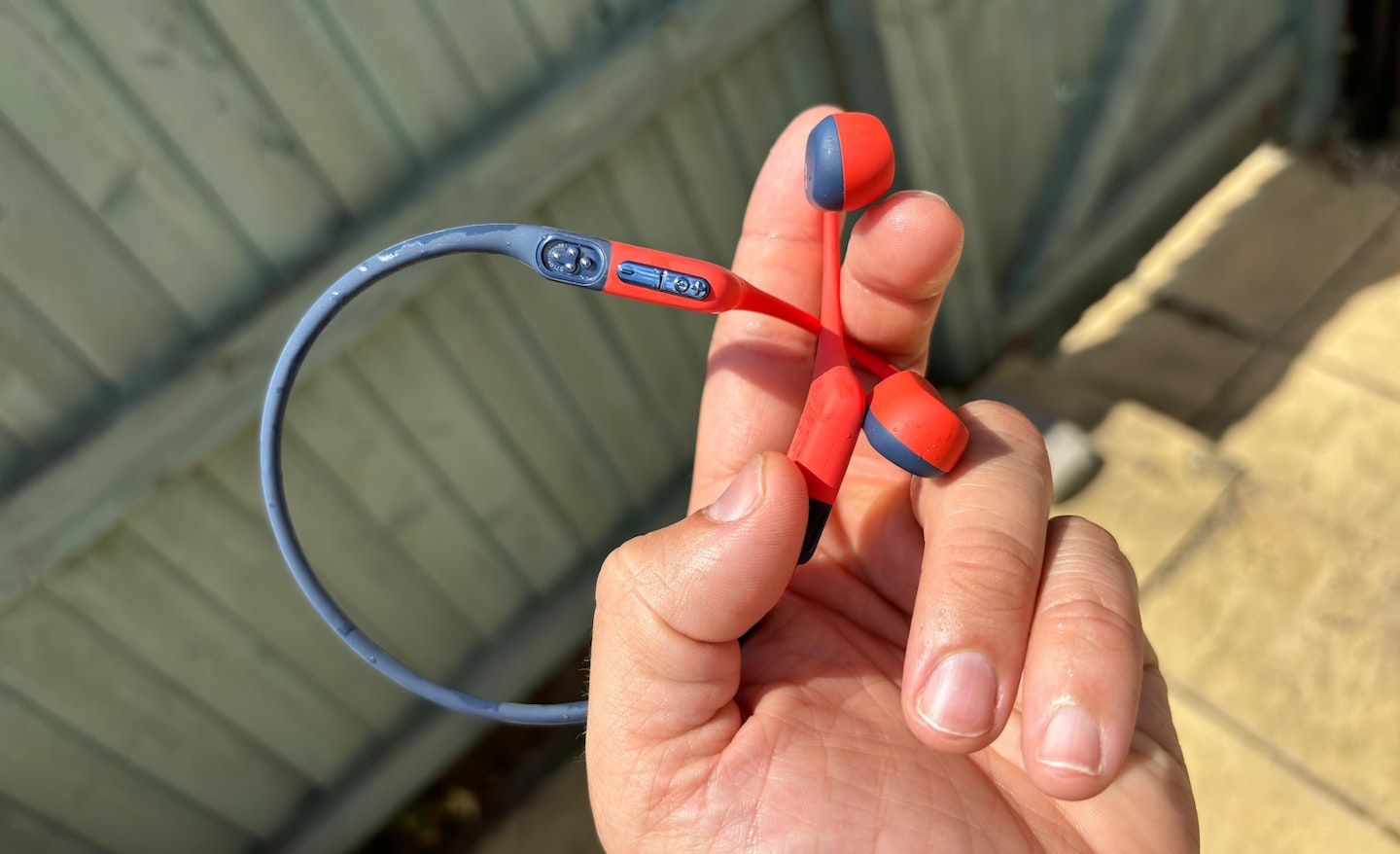
The 32GB of onboard storage translates to about 8,000 MP3 tracks. Uploading these tracks to the OpenSwim Pro is quick – plug the cable into your laptop and drag and drop your files. Using the stored music on the headphones is just as straightforward. Hold the preset button to switch to listening from storage, and control with play/pause, volume, and skipping songs just as it is with Bluetooth. It's just a shame that with the extended MP3 capacity there isn't an option in the app to have some control over the music in the app – for example, it would be great if you could select music folders or genres to ensure your workout is hitting the right rhythm.
Bluetooth versus water
Bluetooth's radio waves don't mix well with water. And while Shokz produces great equipment, it cannot defeat physics. If you want to use the OpenSwim Pro Bluetooth in the pool, you'll have to be tactical about it.
If you swim using strokes that keep your head out of the water and you have your audio streaming from a device on the shore/poolside, the water won't interfere, and you will have access to the full Bluetooth V5.4 range of 33ft/10m.
If you plan on keeping your head – or at least most of your head, including the OpenSwim Pro – underwater, with backstroke or front crawl, then MP3 is your best bet. However, you can have some success if you are streaming from a music-playing watch, such as an Apple Watch or one of several Garmin fitness trackers, including the Garmin Venu Sq 2 Music.
It's all about trying and testing what works for your training regime and stroke preference.
Any problems?
The Shokz OpenSwim Pro offers the convenience of Bluetooth connectivity, allowing you to stream music for up to nine hours. However, this feature comes at a cost: battery life in MP3 mode drops to six hours compared to the eight hours of the original OpenSwim.
This trade-off might be less than ideal for users relying on stored music for longer training sessions. Ultimately, the best choice between the OpenSwim Pro and the original OpenSwim depends on whether you prioritise streaming flexibility or extended playback time for your MP3 library.
Price and competition
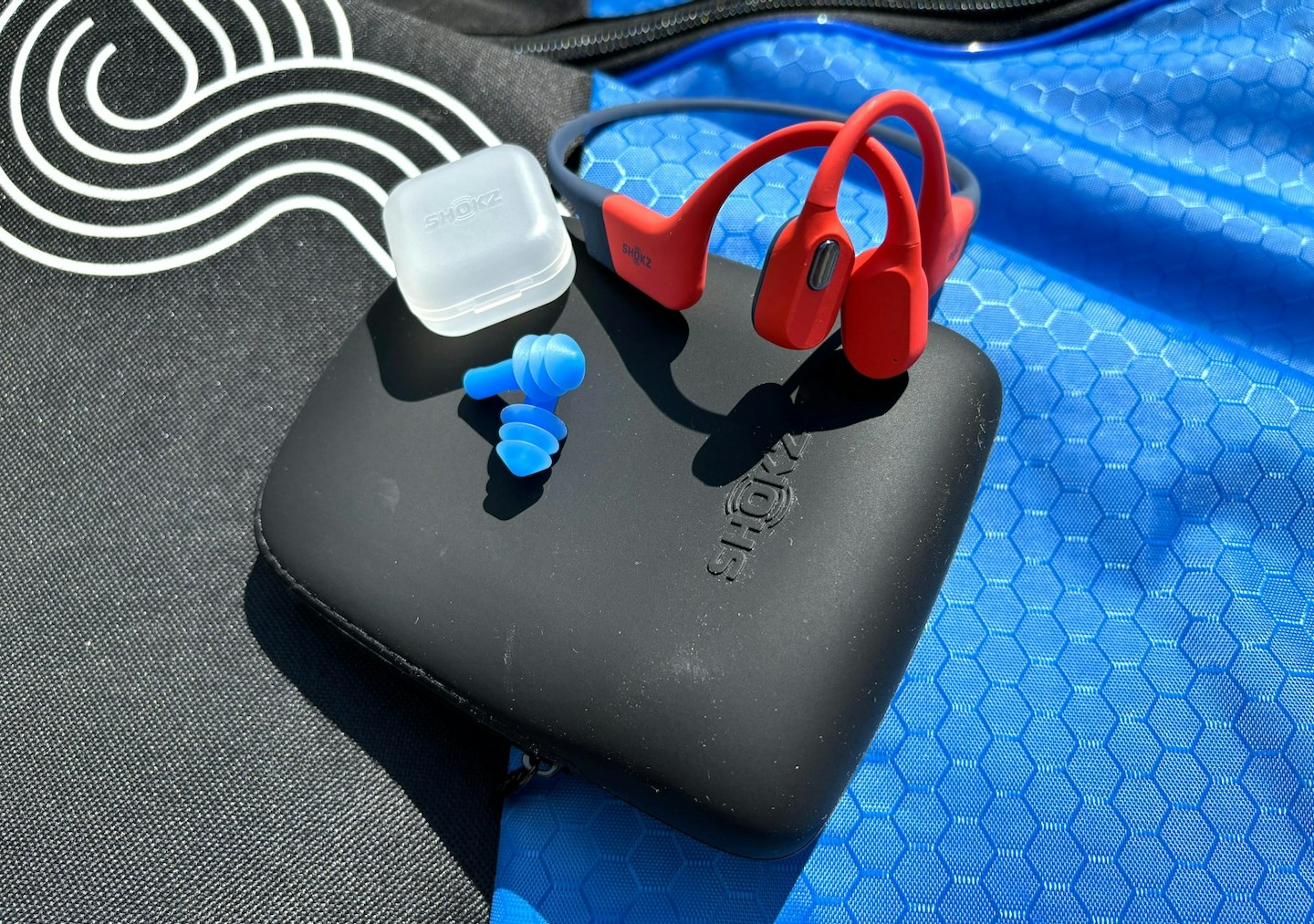
The most apparent competition is a civil war between the OpenSwim Pro and the original OpenSwim, and the competition boils down to whether you want Bluetooth connectivity. I have gotten rid of all my CDs and rely on streaming services, so the MP3-only functionality has no appeal. If you are the opposite, you could save yourself £30 with the original.
You will want to look at the Suunto Wing for a comparable price from rival brands. At £169, the Wing (non-waterproof) headphones come with a portable charging dock that extends their 10-hour battery life by an additional 20 hours, offering three hours of playback with a 10-minute charge. They also feature a proprietary Head Movement Control for skipping songs or answering calls through nodding or head shaking.
The waterproof H20 Audio Tri (£129) offers the most compelling alternative for water-based exercise. These bone-conduction headphones have 8GB of MP3 storage, Bluetooth, and a six-hour battery life, though the controls aren't smooth, and the sound isn't that exciting, according to the feedback from many users online.
Who is it for?
After testing, the Shokz OpenSwim Pro fit the bill for athletes who partake in multiple sports, particularly those who split their training time between swimming and other outdoor activities such as running or cycling. The waterproof capabilities and dual functionality – supporting both MP3 playback and Bluetooth streaming – make it a versatile choice for users who value the convenience of streaming music from their smartphone or fitness tracker when out of the water and the reliability of stored music when swimming.
I'm primarily a runner, and though OpenSwim's name suggests otherwise, I happily state that these are also an excellent choice for runners. The waterproofing gives me peace of mind in downpours and even lets me continue to enjoy my podcasts as I shower at the public gym. Consider the OpenSwim Pro your next headphone purchase if you are a runner.
Would we recommend it?
Yes, the Shokz OpenSwim Pro comes highly recommended. Its improved battery life, quick charging capabilities, and lightweight design enhance its practicality and comfort for extended use. The sound quality is commendable, especially considering the limitations of bone-conduction technology, making it suitable for a range of audio content from music to podcasts.
While it does have some trade-offs – namely, a reduced battery life in MP3 mode compared to its predecessor, though the storage capacity is far higher – the overall improvements and added features justify the extra cost for those who can utilise Bluetooth connectivity. However, if Bluetooth is unnecessary and one is content with MP3-only functionality, the original OpenSwim might be a more cost-effective option.
Similar products to consider
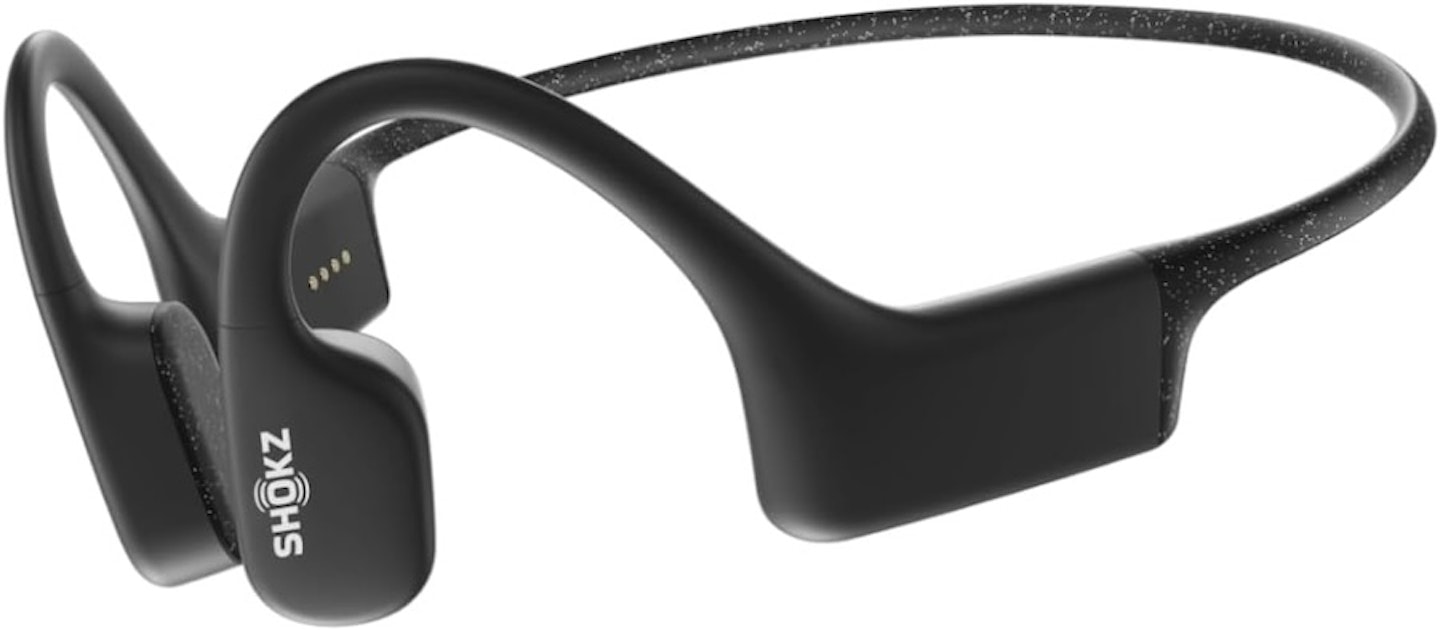
For a similar experience at a lower price, albeit without Bluetooth and a reduced MP3 capacity.
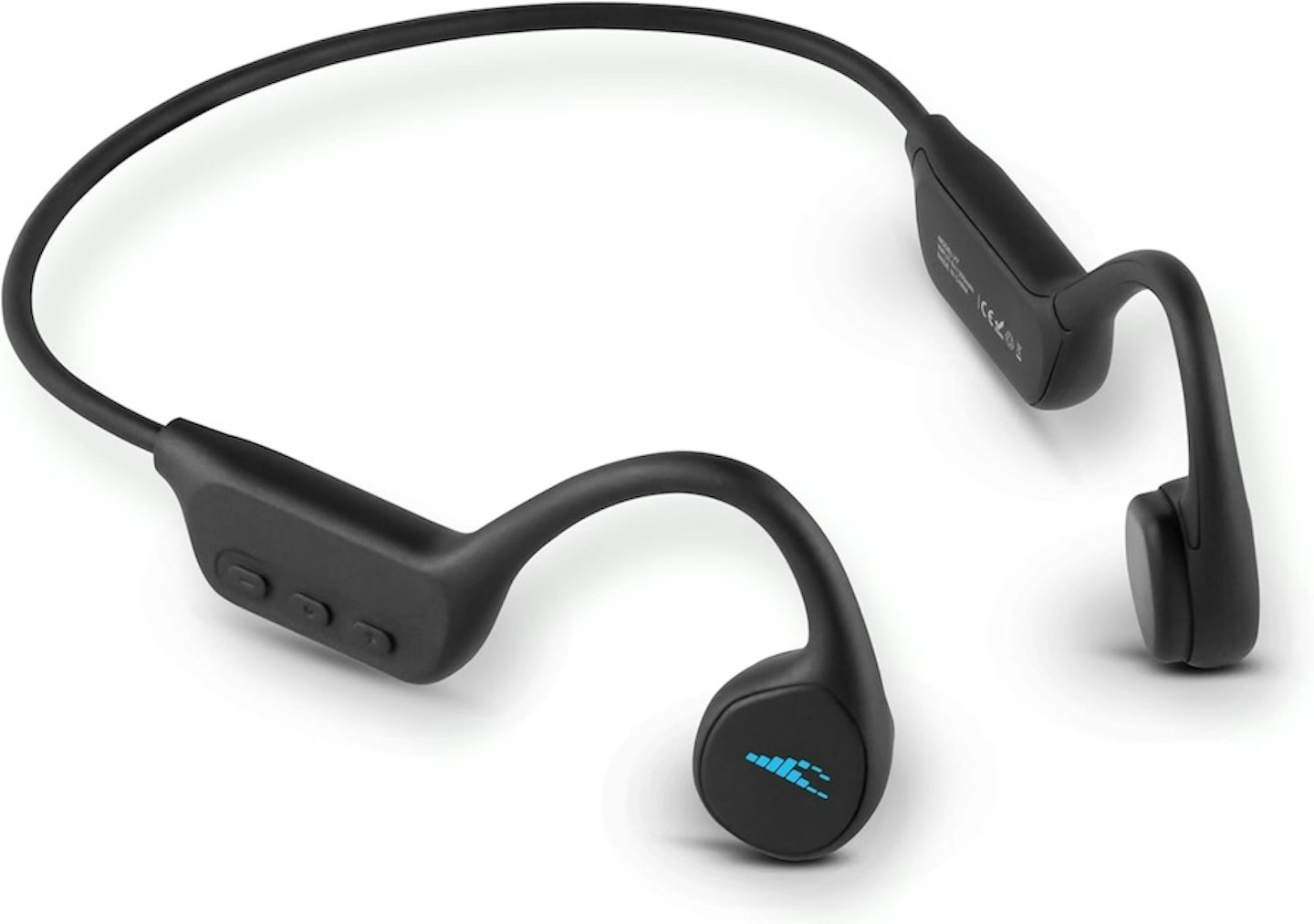
Think Shokz OpenSwim base model, but with twice the MP3 storage. A weaker sound performance, however.
 WTB / William Austin-Lobley
WTB / William Austin-LobleyIf you want excellent open-ear sound and only Bluetooth connectivity, plus you never take a dip, consider these alternatives from Shokz. I reviewed them and awarded them 4.5 stars.
Who tested it?
William Austin-Lobley, What’s The Best’s editor, took on this review, on account of his experience with bone-conduction headphones and hobbies – running and exercising.
William has years of experience reviewing and testing tech and audio products, having worked his way through the ranks of freelancer, junior writer and onto the position he holds today. He’s well-versed in all-things-audio, having a not-so-quiet obsession with quality speakers, headphones and earphones.
How we tested it
William tested the OpenSwim Pro for three weeks, taking them with him on multiple runs, dips in the pool and even a couple of showers. He used the headphones in the office and gym, but mostly on the streets and in public locations.
The app was installed on his iPhone 15 and used to modify the experience of the OpenSwim Pro and test all its features. A few CDs that were kicking about his house were ripped onto his laptop and installed on the OpenSwim Pro's internal memory. However, the vast majority of the audio was streamed via Spotify or Apple Podcasts.
Why should you trust us?
At What's The Best, our mission is to provide accurate and reliable reviews, ensuring our readers receive honest and transparent information about the best technology products available. Anything less would undermine our commitment to being a trusted source of unbiased product information.
Our dedicated in-house writing team comprises experts with extensive experience and a genuine passion for technology. Collectively, we have spent decades testing and writing about tech, leveraging our expertise in all our articles, advice pieces and reviews.
We maintain complete editorial independence and do not accept payment for product reviews. Our writers have full control over their content, ensuring that products are selected based solely on the needs of our readers. While we may earn commissions or other compensation from links on our website, this never affects our product choices. These links enable us to continue offering valuable consumer advice, without compromising the integrity of our reviews.
How What's The Best test products
Struggling to navigate the audio world? We provide unbiased reviews for real listeners.
At What's The Best, we ditch the technical jargon and deliver sound reviews for sound people. Our team of audio enthusiasts puts everyday speakers, headphones, and more through their paces in real-world listening scenarios. We don't waste your time with staged tests – we focus on how these products actually perform for everyday music lovers.
The result? Unbiased buying advice you can trust. We only review the most relevant and impactful audio products on the market, so you know you're getting the latest insights. Can't find a review for your specific gear? We're constantly expanding our review database, so stay tuned!
Want to dive deeper into how we test audio products? Visit our dedicated page detailing how we go about performing our audio reviews.
William Austin-Lobley is the Editor for What's The Best. Here, he oversees, curates and researches listicles and reviews as many products as his home office can handle.
He has spent nearly five years writing about tech, audio, outdoors and fitness and has reviewed everything from smartphones to ice baths. In addition, he's well-versed in sniffing out the best deals and savings the internet offers.
When not at his desk writing, reviewing or deal-hunting, he'll be relaxing with Japanese crime novels, bingeing some classic anime, strolling the countryside or at the gym listening to the heaviest metal Spotify has to offer.
Subscribe to the What’s The Best Newsletter to keep up to date with more of the latest reviews and recommendations from the What’s The Best team.
